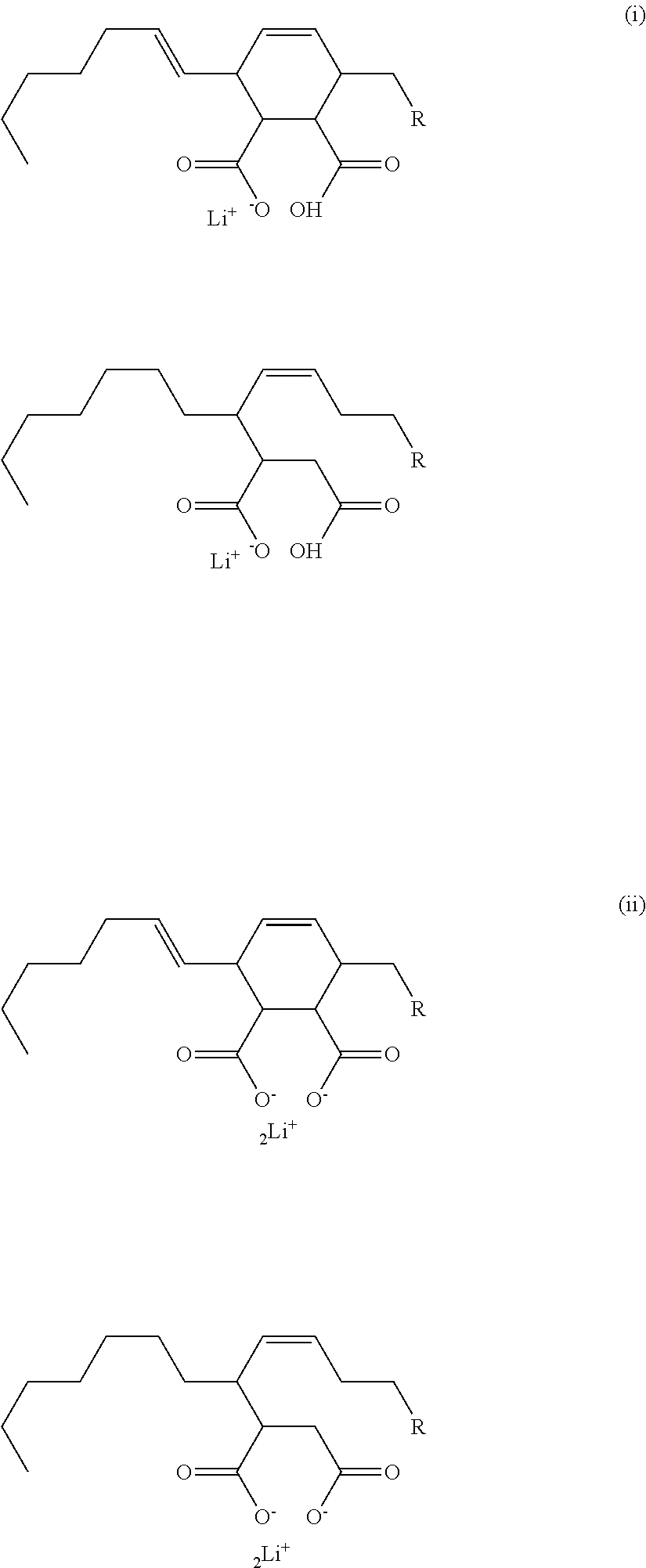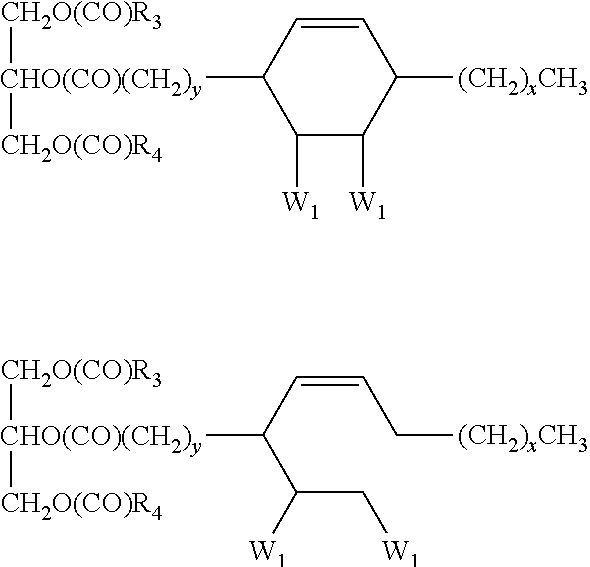Bio-based lubricants
a technology of bio-based lubricants which is applied in the field of natural and vegetable oil derivatives, can solve the problems of poor oxidative stability at high temperatures, high viscosity at low temperatures, and high point toxicity, and achieve good lubricity and low toxicity
- Summary
- Abstract
- Description
- Claims
- Application Information
AI Technical Summary
Benefits of technology
Problems solved by technology
Method used
Image
Examples
examples
[0048]The following examples are intended to demonstrate the usefulness of preferred embodiments of the present invention and should not be considered to limit its scope or applicability in any way.
examples 1-11
[0049]The following method was used to prepare the natural oil based lubricants in Table 1. In a first step, 2000 g of the natural oil and the desired amount (as shown in the table) of maleic anhydride were charged to a 3 L four-neck round-bottom flask. The contents of the flask were gradually heated to 210° C. with agitation under a nitrogen sparge. The reaction mixture was held at this temperature until no free maleic anhydride was detected in the reaction mixture by GC analysis. The reaction mixture was cooled to 50° C. and the desired amount of solid Lithium Hydroxide was added. The reaction mixture was heated at 125-140° C. until the reaction mixture had cleared. Vacuum may be applied to remove excess water but is not necessary. The lubricants obtained had exemplary properties being clear and transparent and exhibited no oil bleed or undissolved saponified triglyceride.
[0050]
TABLE 1Properties of Maleated TriglycerideOils / Lithium Hydroxide NeutralizedPercentMaleicExampleAnhydrid...
PUM
| Property | Measurement | Unit |
|---|---|---|
| pour points | aaaaa | aaaaa |
| pour points | aaaaa | aaaaa |
| pour points | aaaaa | aaaaa |
Abstract
Description
Claims
Application Information
 Login to View More
Login to View More - R&D
- Intellectual Property
- Life Sciences
- Materials
- Tech Scout
- Unparalleled Data Quality
- Higher Quality Content
- 60% Fewer Hallucinations
Browse by: Latest US Patents, China's latest patents, Technical Efficacy Thesaurus, Application Domain, Technology Topic, Popular Technical Reports.
© 2025 PatSnap. All rights reserved.Legal|Privacy policy|Modern Slavery Act Transparency Statement|Sitemap|About US| Contact US: help@patsnap.com



